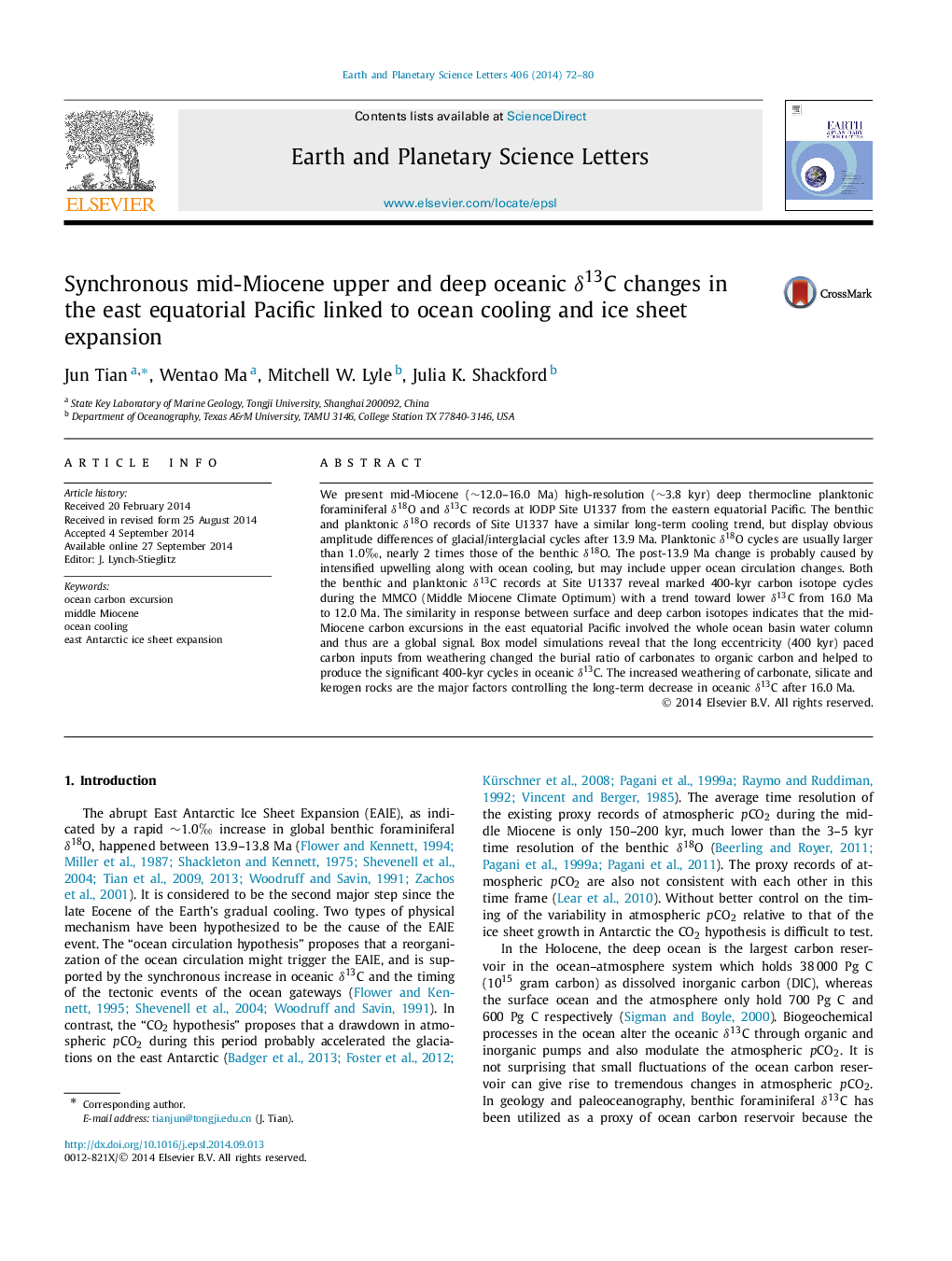| کد مقاله | کد نشریه | سال انتشار | مقاله انگلیسی | نسخه تمام متن |
|---|---|---|---|---|
| 6428964 | 1634750 | 2014 | 9 صفحه PDF | دانلود رایگان |

- Mid-Miocene upper and deep equatorial Pacific δ13C displays great similarity.
- Mid-Miocene Pacific carbon excursions linked to ocean cooling are global.
- Increased weathering of carbonate, silicate and kerogen rocks cause δ13C decline.
We present mid-Miocene (â¼12.0-16.0 Ma) high-resolution (â¼3.8 kyr) deep thermocline planktonic foraminiferal δ18O and δ13C records at IODP Site U1337 from the eastern equatorial Pacific. The benthic and planktonic δ18O records of Site U1337 have a similar long-term cooling trend, but display obvious amplitude differences of glacial/interglacial cycles after 13.9 Ma. Planktonic δ18O cycles are usually larger than 1.0â°, nearly 2 times those of the benthic δ18O. The post-13.9 Ma change is probably caused by intensified upwelling along with ocean cooling, but may include upper ocean circulation changes. Both the benthic and planktonic δ13C records at Site U1337 reveal marked 400-kyr carbon isotope cycles during the MMCO (Middle Miocene Climate Optimum) with a trend toward lower δ13C from 16.0 Ma to 12.0 Ma. The similarity in response between surface and deep carbon isotopes indicates that the mid-Miocene carbon excursions in the east equatorial Pacific involved the whole ocean basin water column and thus are a global signal. Box model simulations reveal that the long eccentricity (400 kyr) paced carbon inputs from weathering changed the burial ratio of carbonates to organic carbon and helped to produce the significant 400-kyr cycles in oceanic δ13C. The increased weathering of carbonate, silicate and kerogen rocks are the major factors controlling the long-term decrease in oceanic δ13C after 16.0 Ma.
Journal: Earth and Planetary Science Letters - Volume 406, 15 November 2014, Pages 72-80